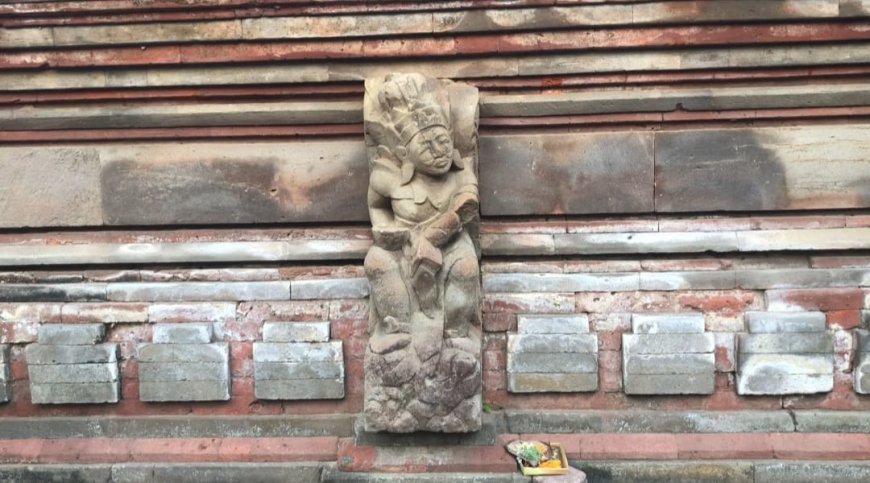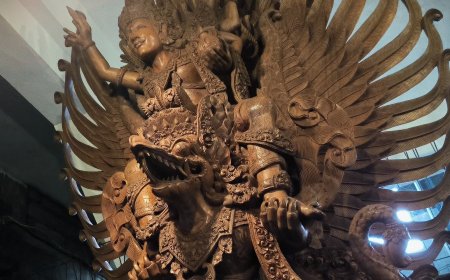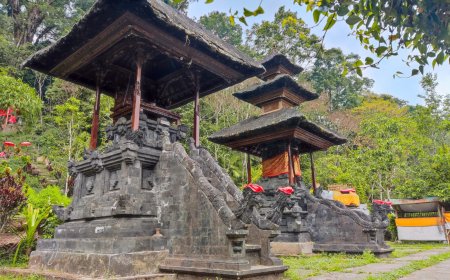Exploring the Agung Luhur Camenggaon Temple in the Area Left by Arya Cameng
Kawitan temple is one type of temple in Bali that is specific because all religious activities and prayers in the temple are carried out by a group of descendants from a particular family. This will be followed from generation to generation. One of the kawitan temples used as a place of worship for ancestors is Agung Luhur Camenggaon Temple. This temple contains an interesting history of the Arya Cameng family and the naming of Agung Luhur Camenggaon Temple itself.

Kawitan temple is a place of worship for the sacred spirits of ancestors of Hindus who have "wit" or ancestor ties based on their lineage. Kawitan temple is specific or special as a place of worship for Hindus who have blood ties according to their lineage. Kawitan temple serves to foster family harmony, from the nuclear family to the clan level. Kawitan worship is based on Atma Tattwa and Purnabhawa which is part of Bhakti Marga, which is realizing love for ancestors and descendants. The kawitan temple also has a role in summoning the Gods for its pratisentana, establishing kinship relations, and placing various groups of citizens in Bali who are already in an equal and related position. In addition, the kawitan temple is also a sacred place for pasemeton groups or descendants of certain families that function to worship the Atma Siddha Dewata.
Agung Luhur Camenggaon Temple is one of the kawitan temples located in Camenggaon Traditional Village, Celuk Village, Sukawati District, Gianyar Regency. The naming of this temple is taken from the name of the traditional village and its history. In the past, the area of this temple was a residential area for the Arya Cameng family, but for some reason they eventually moved to various areas in Bali. The area left by the Arya Cameng was then named Camenggaon which comes from two words namely "Cameng" and "kaon", "Cameng" is the name of Arya Cameng and "kaon" or "mekaon" in Balinese means leaving or moving, so Camenggaon means the area left by Arya Cameng.

Statue of a Man on the Temple Wall (Source: Personal Collection)
Based on the book entitled "Katuturan Sang Katrini," especially in the section that discusses the pratisentana or relatives of Sirarya Tan Mundur, the existence of the Arya Cameng settlement area is estimated since the pratisentana Sirarya Tan Mundur came to the Camenggaon area in 1352 AD after he succeeded in quelling the rebellion of 39 villages in the mountains. He had a child with his wife Ni Luh Pasek Kayu Ireng named I Gusti Ngurah Jelantik Camenggaon. One day, I Gusti Ngurah Jelantik Camenggaon deliberated with his relatives and other residents to build a parhyangan in the Camenggaon area. After the construction was completed in 1711 AD, the Karya Pemelaspas Agung was held on Friday, Pahing, Dunggulan which was later determined as the piodalan of Agung Luhur Camenggaon Temple, which is on Saturday, Kliwon, Kuningan.

Pelinggih Kereban Langit Temple and Ratu Rangda (Source: Personal Collection)
Agung Luhur Camenggaon Temple has an area of about 600 square meters with beautifully carved Balinese temple architecture. There are several buildings and pelinggih as a place for the sesuhunan in this temple, the following is an explanation of the position of the buildings and pelinggih.
- Pelinggih Kereban Langit Temple and Ratu Rangda, located on the outside of the temple or jaba sisi with a position facing north.
- Perantenan, is the name for the kitchen of Agung Luhur Camenggaon Temple which is located in the jaba tengah.
- Bale Pengias, the first building that will be seen when entering the jeruan area of this temple.
- Bale Gong, a building used as a place to store and beat the gamelan during the ceremony which is located in the south of Bale Pengias.
- Bale Peselang, as a place to worship to the Gods. The position of this bale is the same as Bale Gong, which is located in the south of Bale Pengias, specifically in the east of Bale Gong.
- Pengaruman, as a place for the sesuhunan in this temple. Its position is right to the east of Bale Pengias and faces south.
- Main Pelinggih, there are three main pelinggih lined up from north to south, these pelinggih are three gedongs in one line.
- Pelinggih Ibu, located right to the south of Main Pelinggih.
- Pelinggih Gunung Agung, facing west and located to the north of the Main Pelinggih.
- Pelinggih Gunung Lebah and Ratu Penyarikan, both facing south and adjacent to Pelinggih Gunung Agung.
- Gedong Simpen, a high-rise building facing the direction of sunset.
- Encangan Dalem, Pelinggih Ratu Pemayun, and Pelinggih Cameng Pejeng, these three pelinggih are located to the west of Gedong Simpen and facing to the south.
Agung Luhur Camenggaon Temple is a sacred place that preserves Bali's noble heritage with honor. As an integral part of the life of the local community, this temple reminds us to always respect and honor our ancestors by maintaining a profound spiritual beauty.





























































